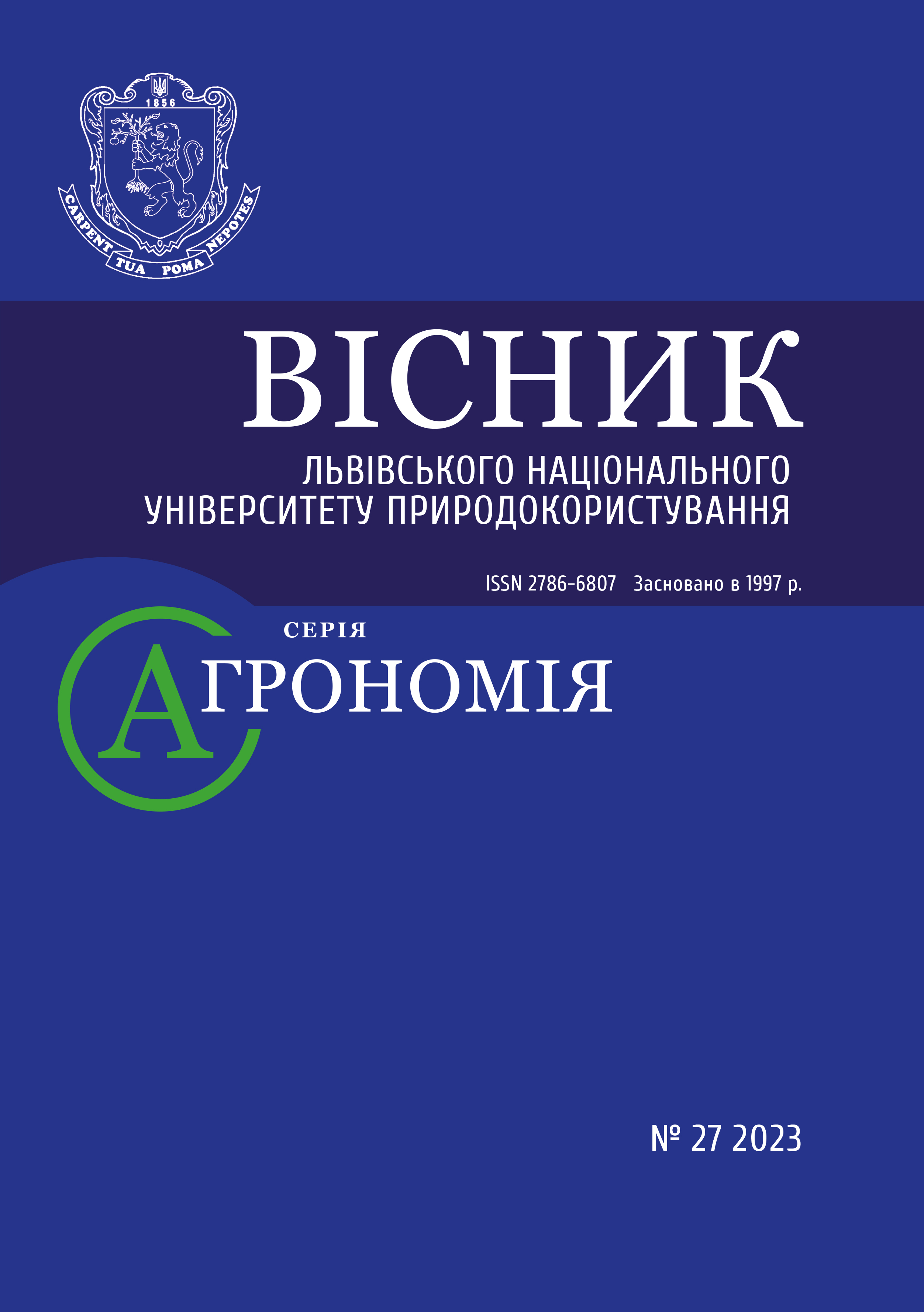CHERRY VARIETIES AND ROOTSTOCKS AS DETERMINING PREREQUISITES FOR ESTABLISHING MODERN COMMERCIAL ORCHARDS
DOI:
https://doi.org/10.31734/agronomy2023.27.085Keywords:
cherry, varieties, rootstocks, production, qualityAbstract
Cherry fruit is a delicious and nutritious food that is grown and consumed all over the world. It is a highly sought-after product, but its production does not fully meet the existing demand. Therefore, the production of cherry fruits is increasing to meet the growing demand.
To assess the current conditions of this profitable branch of agriculture and adopt the best practices of global producers in Ukraine, a review of the largest cherry producers' production volumes and varietal and rootstock composition was conducted.
The largest consumers of cherry fruits are China, the USA, Turkey, Germany, France, Italy, Great Britain, Spain, Japan, and Russia. The main countries that produce cherries on an industrial scale are China, accounting for more than 70 % of global production, and a few others. The total world production of cherries in 2022 was estimated at 3.5 million tons.
To ensure optimal productivity, quality, and economic profitability, modern cherry fruit production technology involves several critical aspects. Selecting the appropriate cherry variety is crucial because different varieties have different growth characteristics, resistance to diseases, and visual and taste characteristics of the fruits. The rootstock selection determines the size of the tree, its productivity and winter resistance, the strength of anchoring in the soil, adaptation to the peculiarities of the soil conditions of the place of cultivation, durability, and productivity of the plantation.
Among the popular cherry varieties grown in commercial orchards around the world, each of which has its unique characteristics, growers select varieties for cultivation based on their high yield, resistance to cracking, shelf life, attractive appearance and taste characteristics. Consumers prefer fruits of hard, sweet and juicy varieties that have a long shelf life.
High-productivity cherry varieties of local selection and introduced varieties are traditionally cultivated in various regions of the world, ensuring stable yields and high quality fruit.
Programs of new cherry varieties breeding with improved yield, disease resistance, increased fruit size, and excellent taste qualities are ongoing in global cherry breeding centers.
New cherry varieties offer unique and improved characteristics that make them attractive to both growers and consumers. Promising new cherry cultivars include the Royal series, Sweet series, Canadian and Czech varieties. As cherry breeding programs continue, we can expect more promising new cultivars soon
Another similar important component of the technology of cherry production, which has a significant impact on the parameters of growth, fruiting and profitability of the plantation, is the choice of rootstock. The rootstock plays a significant role in the production and quality of cherry fruits. Rootstocks are used mostly to limit the growth of trees, increase productivity, as well as to increase resistance to pests and diseases, adaptation to different soil conditions. Rootstock selection is critical to the success of cherry orchards, as it directly affects fruit quality, tree longevity, and profitability.
Analysis of the research results by several scientists in the field of cherry fruit production and statistical data on the productivity of this crop on a global scale allows stating that in the soil and climatic conditions of Ukraine, it is possible to successfully establish large-scale cherry production using the best varieties and rootstocks. However, before launching large-scale production projects, it is necessary to carry out preliminary scientific research on the adaptive capacity of various varieties and rootstock combinations of cherry to grow and fruit in certain soil and climatic conditions and to identify options that are capable of the greatest realization of their fruiting potential.
References
Agricultural production statistics 2000–2021. URL: https://www.fao.org /3/cc3751en/cc3751en.pdf (Accessed August 29, 2023).
Andersen R. L. Current status of sweet cherry breeding. Acta Hortic. No 468. P. 35–44. DOI: 10.17660/ActaHortic.1998.468.1.
Camposeo, Salvatore & A., & Palasciano, Marino. & Pacifico, Andrea. A nine-year study on the performance of twelve cherry rootstocks under non-rainfed conditions in Apulia (Italy). Acta Hort. 2008. No 795. P. 191–198. 10.17660/ ActaHortic, 2008. 795.25.
Carvalho M. L., Dias C., Barrisca C., Branca M., De Melo-Abreu J. P. Crop load effect on productivity and quality parameters of sweet cherry (Prunus avium L.). Acta Hortic. 2012. No 932. P. 187–193.
Fresh Sweet Cherry production and top producing countries. URL: https://www.tridge.com/intelligences/sweet-cherry/production (Accessed August 29, 2023).
Global leading cherry producing countries in 2022/2023. URL: https://www.statista.com/statistics/739339/global-top-cherry-producing-countries/ (Accessed August 29, 2023).
Grzyb Z., Sitarek M., Omiecinska B. Growth and fruiting of five sweet cherry cultivars on dwarfing and vigorous rootstocks. Acta Hortic. No 468, P. 333–338 DOI:10.17660 / ActaHortic.1998.468.40. DOI: 10.17660/ActaHortic. 468.40
Lanauskas J., Kviklys D., Uselis N., Stanys V. Performance of Sweet Cherry Cultivars and Advanced Selections on Gisela 5 Rootstock in Young Orchards. Plants. 2023. No 12 (3). P. 614. https://doi.org/10.3390/plants12030614 (Accessed August 29, 2023).
Lanauskas J., Uselis N., Kviklys D., Kviklienė N., Buskienė L. Rootstock effect on the performance of sweet cherry cv. Lapins. Horticultural Science. 2012. No 39. 10.17221/50/2011-HORTSCI.
Lichev V., Papachatzis A. Eleven-year evaluation of the Gisela and weiroot series of cherry rootstocks in Bulgaria. Acta Horticulturae. 2011. No 903. P. 529–534. 10.17660/ActaHortic.2011.903.73.
Perry R., Lang G., Andersen R. Performance of the NC-140 cherry rootstock trials in North America. Acta Hortic. No 468. P. 291–296 DOI: 10.17 660/ Acta Hortic.468.34
Usenik V., Fajt N., Štampar F., 2006. Eects of rootstocks and training system on growth, precocity and productivity of sweet cherry. Journal of Horticultural Science & Biotechnology. 2006. No 81. P. 153–157.
Wertheim S. J., Balkhoven J. M. T., Callesen O. Results of two international cherry rootstock trials. Acta Hortic. No 468. P. 249–264 DOI: 10.17660/ActaHortic. 468.
Ystaas J., Frøynes O. Evaluation of sweet cherry cultivars and advanced selections. Acta Hortic. No 468. P. 115–122. DOI: 10.17660/ActaHortic.468.12.


